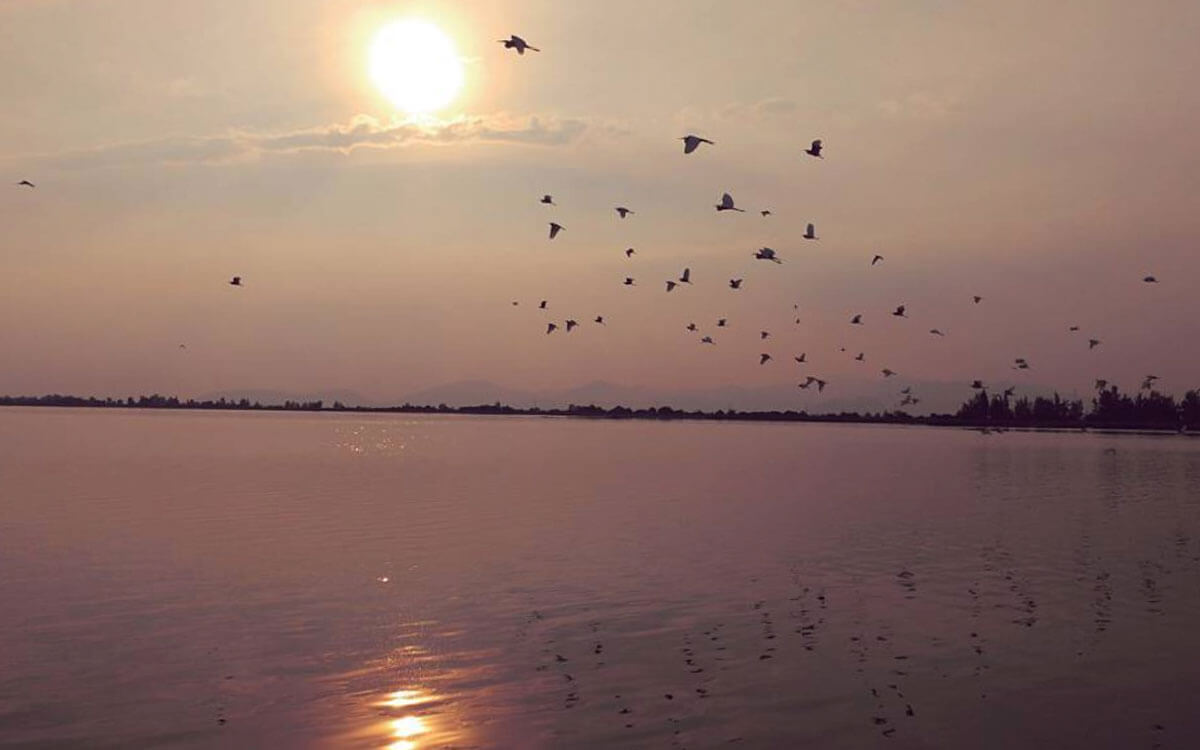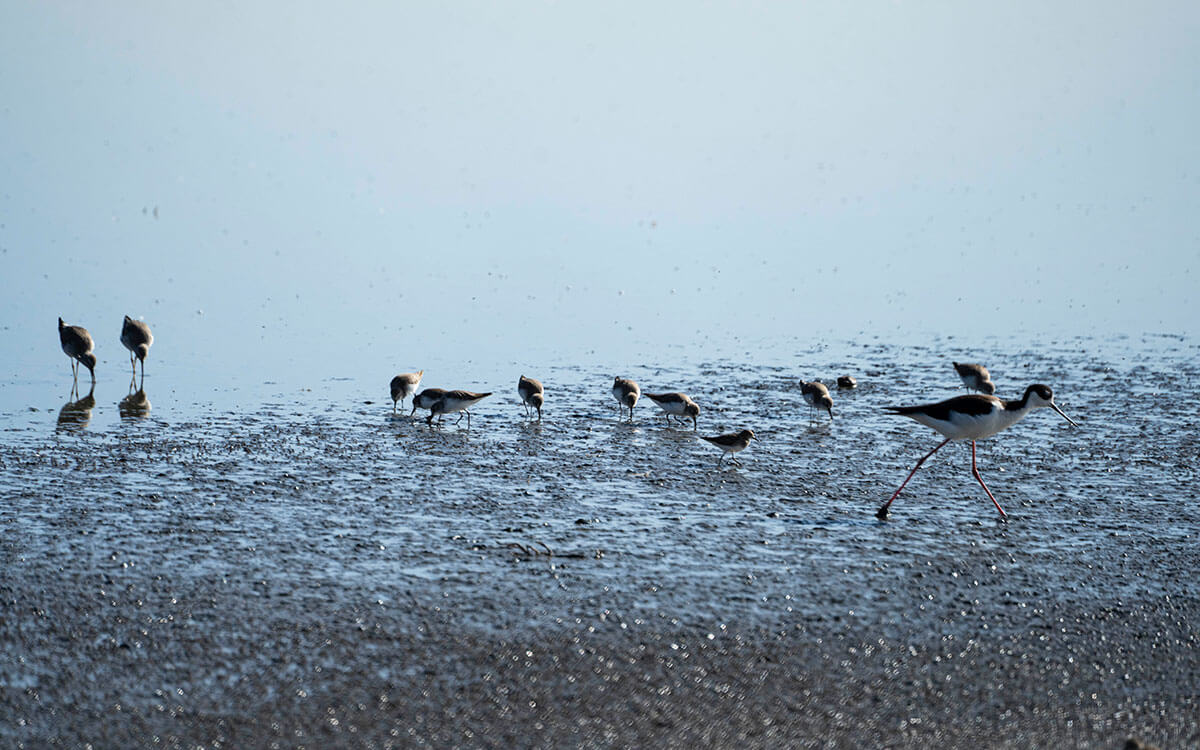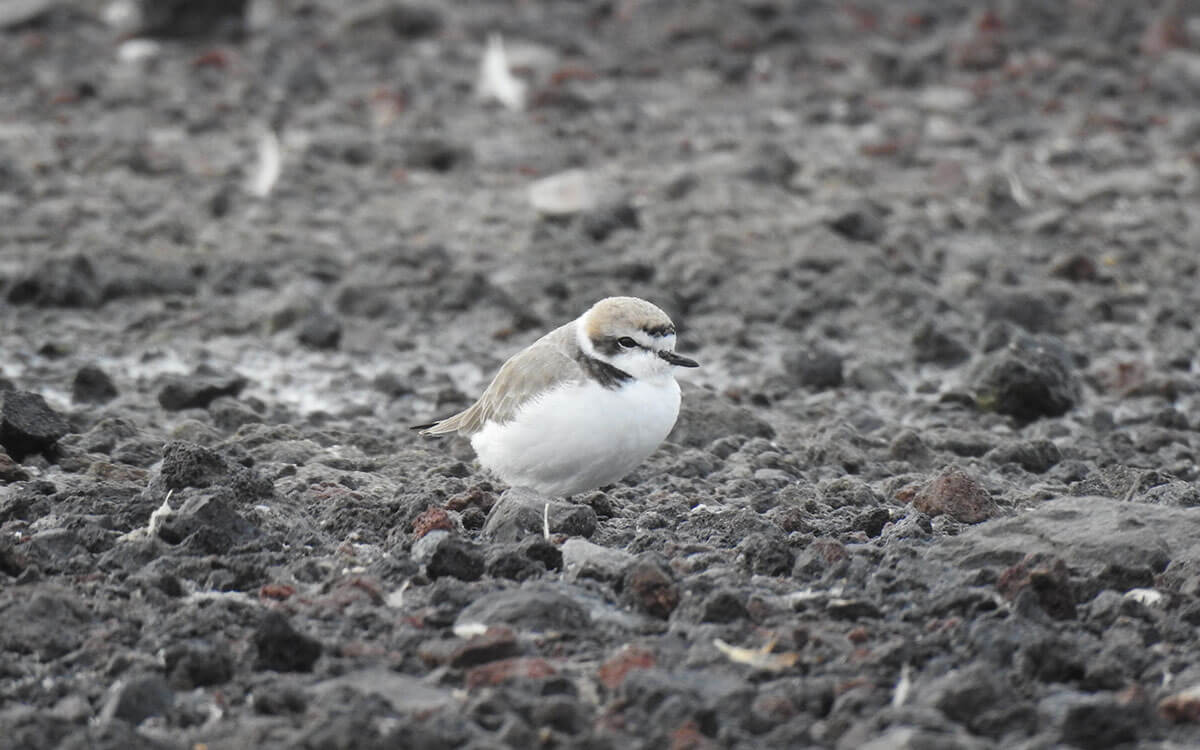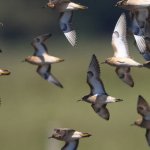The Zona Federal Lago de Texcoco (ZFLT – Texcoco Lake Federal Zone), is the last remnant of what was once the Lago de Texcoco, a complex system of interconnected lakes and wetlands, that covered the greater part of the Valle de México. It is immersed in the metropolitan area of the Valle de México, at the limits of the City and State of Mexico. Despite being drained several decades ago, this site still retains some artificial water bodies and large seasonally-inundated areas. These shallow ponds and lakes provide shelter and food for a large number of shorebirds and other aquatic birds that travel along the Central American migratory flyway. For this reason, since 2007, Lago de Texcoco has been designated as a site of regional importance within the Western Hemisphere Shorebird Reserve Network (WHSRN).

Panoramic view of Lago de Texcoco. Photo: I. Fong
Thanks to the work of diverse academic institutions, civil associations and non-governmental organizations, and to the assistance of the Comisión Nacional del Agua (CONAGUA – National Water Commission), we now know that the area is an important site for more than 30 species of shorebirds. For example, as many as 62,000 individuals of Wilsonʼs Phalarope (Phalaropus tricolor) have been recorded in a year, as well as large numbers of Least Sandpiper (Calidris minutilla), Bairdʼs Sandpiper (Calidris bairdii), and Western Sandpiper (Calidris mauri). The site is also used by a great number of resident species such as Black-necked Stilt (Himantopus mexicanus), American Avocet (Recurvirostra americana), Killdeer (Charadrius vociferus), and Snowy Plover (Charadrius nivosus).
Unfortunately, Lago de Texcoco has faced several development pressures, and the area has been the subject of social, cultural and territorial disputes. The most recent conflict was over the construction of the New International Airport of Mexico (NAIM – Nuevo Aeropuerto Internacional de México) that had serious consequences on the ecosystem, generating great national and international controversy. The project impacted habitat for several resident and migrant species, including one of the principal breeding areas of the Snowy Plover, a species that is threatened in Mexico.The airport was started under a previous government adminstration, so with a change of government, and political, social, academic and cultural pressures to conserve the lake, the construction of NAIM was cancelled. In its place, was the proposal to create the Lago de Texcoco Ecological Park (Parque Ecológico Lago de Texcoco). The objective of the project is to maintain the dynamism of the site for the conservation of flora and fauna, as well as increasing knowledge and building conservation support with local residents. It is destined to be one of the largest ecological parks in the world.


Left: Shorebirds feeding on the shores of the lake. Photo: A. Aguirre. Right: Snowy Plover at Lago de Texcoco. Photo: I. Fong
Creation of the Parque Ecológico Lago de Texcoco will promote the recovery of the site with the development of conservation. These programs is still in development, but it is known that there will be an ecological restoration program, as well as a refuge and protected area for waterfowl. In addition, there will be spaces for recreation and leisure, and finally, a solution to the social conflicts generated by the former airport project will be provided (https://presidente.gob.mx/presentan-proyecto-del-parque-ecologico-lago-de-texcoco/). The ecological restoration activities at the site were framed in a presidential decree and in the Ley General de Equilibrio Ecológico y Protección al Ambiente (General Law for Ecological Equilibrium and Environmental Protection). As a result, it is expected that the creation of the ecological park will provide social, educational, cultural and recreational benefits to the inhabitants of the region while being compatible with the conservation of the lake.

Grassland zone at Texcoco. Photo: I. Fong
Lago de Texcoco reminds us that all is not always lost. With concrete actions coordinated between diverse stakeholders, it is possible to recover this habitat, for wildlife and human communities. Its rescue and restoration provide a fresh vision of what is needed for conservation, and allows us to reflect on the fact that the conservation of sites is possible with controlled and coordinated management and when people stand-up for these places.
Cover Photo: A group of Wilsonʼs Phalarope feeding on the lake. Photo: A. Aguirre






